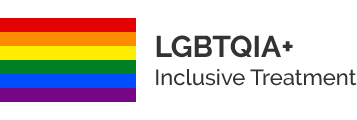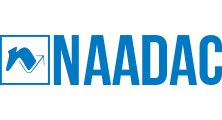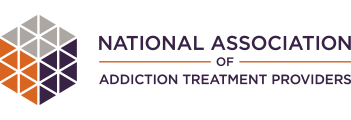Prescription drug addiction can often times be hidden in plain sight, making it difficult to identify. Understanding and recognizing the signs, symptoms, risks and more is the first step in the recovery journey.
Understanding Prescription Drug Addiction
Learn about prescription drug addiction
Prescription drug abuse is the use of any medication in a way not intended by the doctor who prescribed it, such as using for the purpose of the feelings the drug creates. Prescription drug abuse can also include taking a friend’s pills or using it as a means to get high. The abuse of medication is a growing problem that has come to affect all age groups, however it is more common among younger individuals. The most commonly abused prescription medications fall into the following three categories:
- Opioids – Medications such as OxyContin and Vicodin are used to help individuals suffering from moderate to severe pain in addition to a euphoric sensation.
- Central Nervous System Depressants – Also referred to as sedatives, tranquilizers, and depressants, these medications are used to treat anxiety and sleep disorders. This class of drugs include benzodiazepines like Xanax and Valium. Additionally, this class also includes hypnotics like Ambien. These drugs creating a calming, relaxing sensation and dull any distressing emotions.
- Stimulants – This last class of drugs include medications that are meant to help treat ADHD and sleep disorders. These medications increase the production of activity in areas of the brain associated with alertness, energy, concentration, and memory.
Many times, people are under the misconception that prescription medications are safer than illicit drugs, however this is only the case when they are taken exactly as prescribed. When abused, prescription drugs can be addictive and put others at increased risk for adverse health consequences similar to illegal drugs.
Statistics
Prescription drug addiction statistics
It has been estimated that approximately 2.7% of adults in the United States abuse prescriptions medications. After marijuana, prescription medications are the most abused class of drugs for those over the age of 13. About 5% of high school seniors stated they’d used OxyContin, while about 8% admitted to taking Vicodin for non-medical purposes. It is difficult to obtain accurate rates of prescription drug dependence and abuse however as many individuals, especially youth, don’t seek treatment.
Causes and Risk Factors
Causes and risk factors for prescription drug addiction
There is no simple explanation for what causes an individual to develop a drug addiction. It is believed that there are numerous factors at play, including individual differences, environmental influences, life factors, and history of use of substances that interact to cause an addiction problem. Some causes that have been linked to abuse of prescription medications include:
Genetic: Those who have relatives, especially first-degree relatives, who have had problems with substance abuse or alcoholism are more likely to have problems with addiction later in life.
Environmental: Sometimes individuals use prescription drugs, either as prescribed by a doctor or in an abusive way, to experience a rush or a high. This increases the chance they will take the drug again in order to achieve those same effects. As an individual continues to use the drug it eventually leads to tolerance, addiction, and dependency. Additionally, an individual may have learned early on in life that substance use was an appropriate means of coping with the stressors of everyday life and so they use when they are presented with difficult times.
Signs and Symptoms
Signs and symptoms of prescription drug addiction
Signs and symptoms of prescription drug use and abuse will differ depending on the type of medication being abused. Some of the most common symptoms associated with most prescription medications may include:
Mood symptoms:
- Excessive mood swings
- Hostility
Behavioral symptoms:
- Neglected responsibilities in multiple settings
- Stealing, forging, or selling prescriptions
- Seeking prescriptions from more than one doctor
- Continuously losing prescriptions so more can be obtained
- Using the drug in hazardous situations or risky behaviors
- Most of the day is spent thinking about, obtaining, using, or recovering from the drug
- Lack of participation in activities once enjoyed
Physical symptoms:
- Changes in sleep patterns
- Appearing to be unusually energetic or sedated
Psychological symptoms:
- Worsening mental health state
- Increases in anxiety and/or depression
Effects
Effects of prescription drug addiction
The effects of prescription drug misuse will also depend on the type of medication being abused. Some common effects include:
- Emotional numbing
- Problems with interpersonal relationships
- Loss of a social support network
- Social rejection and/or social withdrawal
- Shame or guilt
- Employment problems
- Lowered academic performance
- Financial problems
- Legal difficulties and incarceration
- Psychological problems
- Impaired judgment and decision making
- Motor vehicle accidents and accident related injuries
- Loss of self-esteem and self-confidence
- Self-harming behaviors
- Suicidal thoughts and behaviors
Withdrawal Effects
Withdrawal effects of prescription drug addiction
If a person has become dependent upon prescription drugs, quitting the drugs or cutting back on the amount used can lead to symptoms of withdrawal. It’s best to undergo withdrawal in a medically-monitored rehab center in which a person will have around-the-clock care and supervision to ensure safety. Withdrawal effects experienced will be dependent on the drugs of abuse. Some of the more common effects include:
- Nausea and vomiting
- Sweating
- Shaking or trembling
- Muscle aches
- Bone pain
- Headaches
- Agitation
- Anxiety
- Depression
- Seizures
- Insomnia
- Diarrhea
- Chills
Co-Occurring Disorders
Prescription drug addiction and co-occurring disorders
It can be difficult to determine which disorders most frequently co-occur with prescription drug abuse, given that many individuals use them to self-medicate. However, there is evidence that certain disorders and conditions are likely to occur along with prescription drug abuse. These include:
- Depression
- Anxiety disorders
- Somatization disorders
- Bipolar disorder
- Poly substance abuse (use of drugs from at least three different classes)
- Illegal drug use
- Attention deficit hyperactivity disorder
- Conduct disorder
- Antisocial personality disorder
- Suicidal ideation and behavior








